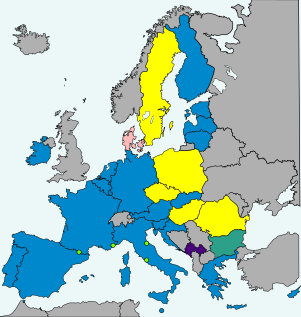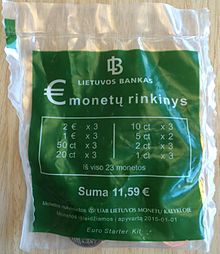
Back ليتوانيا واليورو Arabic Euro en Lituanie French Lithuania dan euro Malay Литва и евро Russian Литва та євро Ukrainian

- European Union member states (special territories not shown)
- 20 in the eurozone5 not in ERM II, but obliged to join the eurozone on meeting the convergence criteria (Czech Republic, Hungary, Poland, Romania, and Sweden)
- Non–EU member states

Lithuania, as an EU member state, joined the eurozone by adopting the euro on 1 January 2015.[1] This made it the last of the three Baltic states to adopt the euro, after Estonia (2011) and Latvia (2014). Before then, its currency, the litas, was pegged to the euro at 3.4528 litas to 1 euro.
- ^ "Lithuania to adopt the euro on 1 January 2015". Council of the European Union. 23 July 2014. Retrieved 23 July 2014.